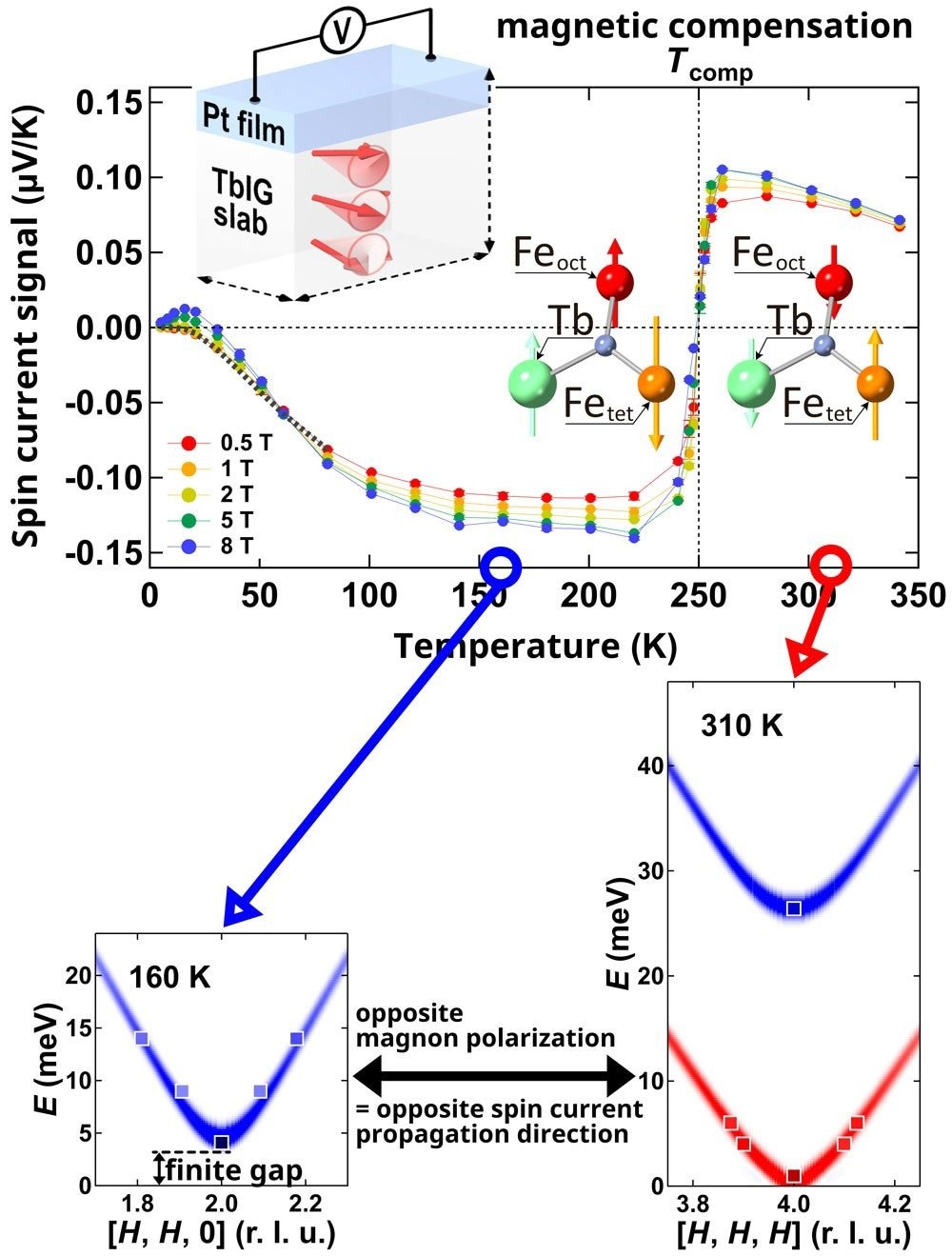Reviewed by Lexie CornerApr 24 2024
In research published in the journal Applied Physics Letters, Yusuke Nambu and his colleagues from Tohoku University’s Institute for Materials Research revealed that the spin current signal changes direction at a certain magnetic temperature and diminishes at lower temperatures.
 Temperature dependence of the spin current signal and magnon polarization above and below the magnetic compensation temperature. Image Credit: Yusuke Nambu
Temperature dependence of the spin current signal and magnon polarization above and below the magnetic compensation temperature. Image Credit: Yusuke Nambu
Spintronics is a rapidly growing area due to the numerous potential benefits it might bring to conventional electronics. These include lower power consumption, faster operation, non-volatility, and the possibility of additional features.
Spintronics uses electrons’ intrinsic spin, which is vital to the field, to regulate the flow of the spin degree of freedom, that is, spin currents. Scientists are continually exploring new ways to make, remove, and manage spintronics for future uses.
Detecting spin currents is no simple task. It necessitates the use of macroscopic voltage measurement, which examines the entire voltage fluctuations across a material. However, a major stumbling block has been a lack of understanding of how the spin current flows or propagates inside the material.
Using neutron scattering and voltage measurements, we demonstrated that the magnetic properties of the material can predict how a spin current changes with temperature.
Yusuke Nambu, Study Co-Author and Associate Professor, Institute for Materials Research, Tohoku University
They also discovered that the spin direction, or magnon polarization, flips at and below this crucial magnetic temperature. This shift in magnon polarization corresponds to the reversal of the spin current, providing information on its propagation direction.
The material tested exhibited magnetic properties with unique gap energies. This shows that spin current carriers are nonexistent below the temperature associated with this gap energy, explaining the observed decrease in the spin current signal at lower temperatures. Surprisingly, the spin current’s temperature dependence exhibits an exponential decrease, echoing the neutron scattering measurements.
Nambu adds that their findings demonstrate the importance of knowing minute details in spintronics research.
Nambu concluded, “By clarifying the magnetic behaviors and their temperature variations, we can gain a comprehensive understanding of spin currents in insulating magnets, paving the way for predicting spin currents more accurately and potentially developing advanced materials with enhanced performance.”
Journal Reference:
Kawamoto, Y., et al. (2024) Understanding spin currents from magnon dispersion and polarization: Spin-Seebeck effect and neutron scattering study on Tb3Fe5O12. Applied Physics Letters. doi.org/10.1063/5.0197831